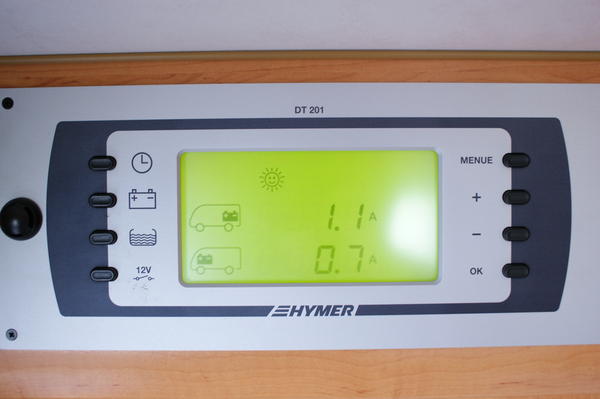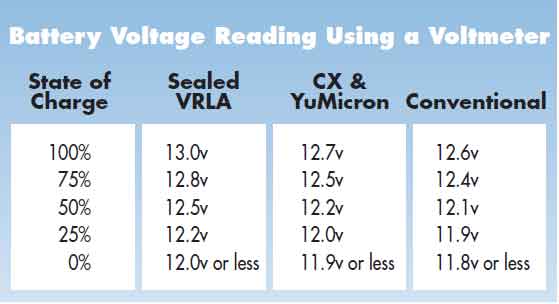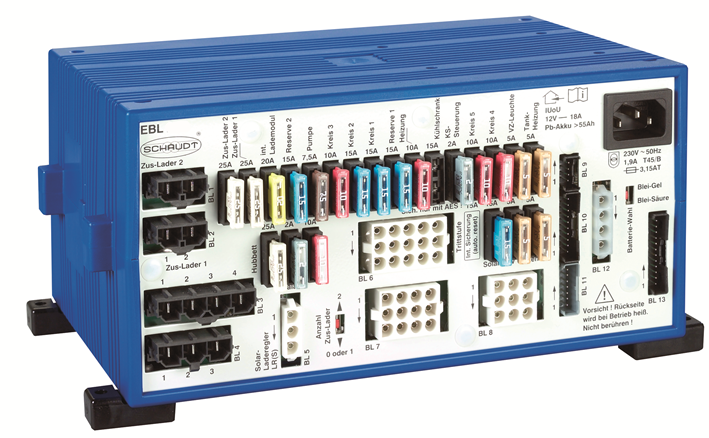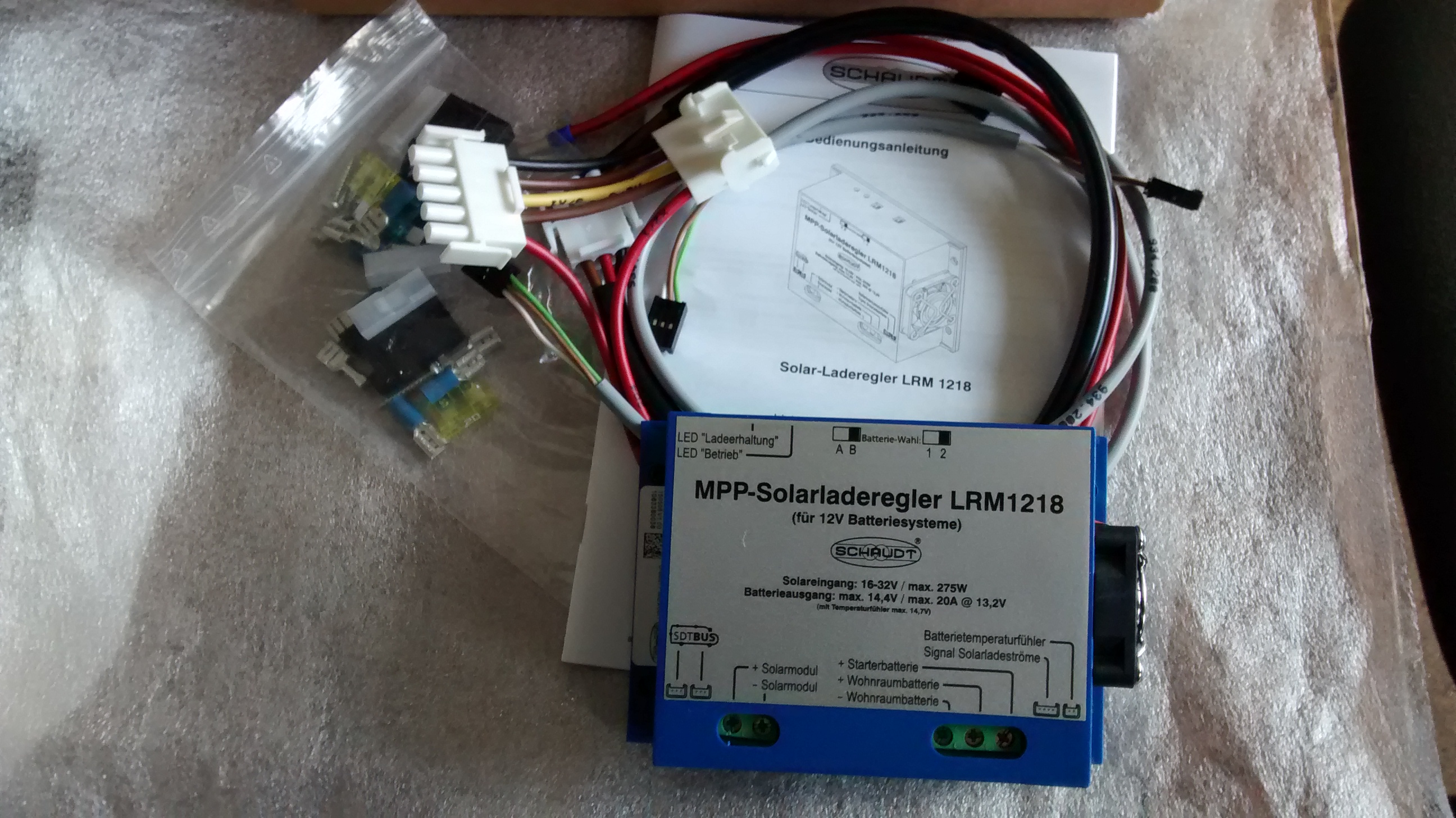Translate This Page
Last updated : 08/01/2022
Schaudt Elektroblock
We are a Schaudt authorised distributor and approved repair firm able to service the Schaudt range of products. Including many of the obsolete models. The Elektroblock EBL99 is fitted in more Motorhomes Worldwide than any other Charger/Power Distribution Unit.
Apart from the paragraph above explaining what we do, that is all the advertising you will see on most of the information pages.
Schaudt units are well made and of excellent quality being made in Schaudt's own manufacturing facility in Germany. The Support we have from the factory is excellent.
Contrary to some of the information on the Web Forums they do have built in Spike and Surge protection.
70% of all the problems we see with the Schaudt Elektroblock range of products are failures due to the use of Batteries that are past their End Of Life (EOL), the wrong type of technology or of larger capacity than permissable.
The key to prolonging the life of any Motorhome/Caravan charger is replacing the battery before it is exhausted, as batteries are used they deteriorate, even the very best batteries lose a small percentage of their capacity each time they are charged and discharged (referred to as the charge cycle).
As they are used they place an increasing load on the charger. Some budget batteries at 1 year old can be placing a bigger load on the charging systems (both the Alternator and Mains 230v charger) than the best battery does at 3 years old. See here for more info
The Schaudt Elektroblock is far more than just a Charger, they are sophisticated units, with multiple functions :
1. Routing all charging for Solar, Alternator or Mains/generator. The EBL has built in Alternator charging control, there is no separate Split Charge relay like on some products, it is all built into the box.
2. Solar Power charging consolidation by displaying Solar charge, both the Voltage and Current, on the main display for both Habitation and Starter batteries.
This isn't supported on all models and only available if the Schaudt compatible Solar Regulators are used, see our Solar Power pages for more info.
In addition to the Analogue and LED displays, some LCD display units, like the DT 201/EBL101 and DT 220/EBL 220, have a separate, 'page' to show Solar charge, like this below :

In the photo above, the Solar 'page' (note little Solar/Sun symbol) shows 1.1amps is going into the Habitation battery and 0.7a to the Starter battery. If you press the Battery button a second time, the Voltage 'page' is displayed for both Starter and Habitation battery.
The above display information is only available if the Solar install follows that recommended by Schaudt and the Motorhome manufacturer, see Here for more details.
3. A power boost controller for the Alternator charge to the Leisure battery. Some of the Schaudt products, like the EBL 109, WA1215 range, etc. use Voltage Boost technology that boosts the Alternator output to compensate for lost voltage over a long cable run.
An Elektroblock equipped Motorhome has heavier duty cables for the Alternator cabling, generally higher quality/core thickness than many other manufacturers Motorhomes, resulting in little loss of voltage.
Along with the way the Elektroblock works, this helps an Elektroblock to recharge it's batteries on the move more quickly than many other manufacturers units/installs and why aftermarket Alternator Battery 2 Battery Booster units are not only less effective but should NOT be fitted unless the installer fully understands the Elektroblock and the implications.
The Schaudt Elektroblock almost always charges the Habitation batteries at the fastest rate commensurate with long Battery Life.
Adding a B2B with it's higher charge rate usually degrades the battery, resulting in lengthening charging times because of the degradation caused by the faster charging effect on the battery.
A B2B 'fast' charging conventional batteries might have slightly faster charging times initially, but these will worsen as the batteries are used and degrade from the higher voltage. Ultimately the batteries may become so corroded internally from the forced charging, sometimes in less than a year, that the B2B charging times may actually be longer than the standard set-up.
4. Starter battery charging when on mains EHU, with between 2 - 8 amps charging dependent on the EBL model. Therefore a "Battery Master" style device should NOT be fitted as the EBL already has this functionality built in.
5. Power distribution with the required safety mechanisms. The fused outputs can supply power up to 90% of the fuse rating, as per most fuse protected devices.
Some Elektroblocks will cut all 12v power when the voltage falls below a preset level, usually around 11v, to allegedly prevent damage to the battery from complete discharge. But note that for long battery life most battery manufacturers recommend a discharge to no lower than 50% DOD which for most Lead technology batteries is 12.1volts, otherwise Battery life will be compromised as the recycle rating diminishes. Even on specialised deep discharge batteries.
Many of the charts you will find on the web are out of date, based on old high Antimony based technology. They also don't take account of the fact that different technology batteries have different voltage ranges.
The Yuasa chart below shows how the battery State Of Charge varies across technologies.
Sealed/VRLA (Gel, AGM and Powerframe) have a resting voltage closer to 13v, not the 12.5v/12.6v that many out of date charts depict, so also have a correspondingly higher fully discharged voltage :

6. Most models of Elektroblock control the refrigerator. Some offering the ability to run an AES (Automatic Energy Selection) fridge's control circuitry from the leisure battery when the engine not running and switching to the vehicle (starter) battery when driving. While this functionality is offered, some motorhome constructors don't always use it.
There is no external fridge relay, all controlled within the Elektroblock.
7. Frost protection. On some models of heaters and boilers a frost protection valve can be controlled to drain the water below preset temperatures or when the Elektroblock is shutdown in order to avoid freezing or bacteria developing.
8. An inbuilt Charger that provides much of the 12v demand in addition to charging the battery. Early EBL units had a 16amp charger later models had 18A.
9. The ability to integrate an external LAS1218 Charger to cope with multiple batteries that go above the permissable 180Ah capacity limit.
Because the EBL charges both Habitation and Starter Batteries, you should also make an allowance for the Starter battery capacity when calculating the bank size.
One of the new Schaudt EBL 107 18amp charger documents states :
"The leisure battery may be damaged beyond repair if totally discharged. So therefore Fully charge the leisure battery before and after a shutdown (connect the vehicle to the mains for at least 12 hours and 24 hours for an 80Ah and 160Ah battery respectively)".
To us, that suggests that Schaudt consider the limit of the 18a charger is a 160Ah habitation battery, presumably making a 20Ah allowance for the Starter battery?
On the newer versions up to 8amps can be drawn by the Starter battery, one third the total charger output.
The new EBL 119 replacement for the EBL 99 has a timer interval on the Gel/Lead setting which is 4 times longer than the old EBL 99, giving much faster, more complete charging.
10. The EBL 99k built from around 2013 onwards has greater inbuilt protection for various circuits in the form of electronic fuses. In the event of a short circuit, the EBL may require 'resetting' to reactivate the fuse. This is done by turning the unit off for 30 seconds, then back on. This applies to some other late model EBL units as well.
Pre 2013 EBL units do not respond to a 'reset', turning these off and on sometimes results in the unit not powering back on.
We recommended that you switch the battery isolation switch on the Elektroblock to the, Off/Aus position if the vehicle is to be laid up for more than fourteen days. This will stop the habitation battery from discharging and dump the water in the boiler. If this has not been done for some time the contacts may be oxidised and a new switch may be required.
Solar Power.
The Solar charge regulator should pass it's harvest to the solar port of the Elektroblock so that it is distributed to the habitation battery and the vehicle battery. On some models, like the EBL99, the vehicle battery is charged by using a special interface cable that fits between Block 2 and the mating connector. Solar harvest will then show on the control panel in the same way as when connected to EHU.
You may impact the warranty if you don't fit a Hymer/Schaudt recommended device, particularly if the wiring is changed or cut for the installation of a Battery Master, which will in any case short circuit the EBL's functionality?
See HERE (section 3) for more information on why a Battery Master style device, like the Vanbitz, CBE, Sterling, etc, compromises the EBL and is also the least efficient method of keeping the Starter battery topped up when installing Solar.
The EBL 101, 226, 220, etc should have the recommended Schaudt Solar regulator fitted, or the compatible Votronic MPP xxx Solar controllers. Both the Solar Regulator 'power/charge' cable and the Solar reg 'Data' cable should plug directly into the EBL. This is because these EBL's are designed to handle ALL power being drawn from, and all charge into, the Habitation Area batteries.
By being the sole controller of the battery power the EBL can calculate how long the battery will last and show a display on how many Amp Hours (Ah) remain.
If any device is either putting power into/drawing it out of the battery directly, without going through the EBL, the calculations will be incorrect. In severe circumstances, such as the battery voltage rising when the EBL expects it to be dropping, or vice versa, the electronics can believe there is a fault and shut down.
You can see on the picture below, over towards the lower left, a 3 pin Solar Regulator charge socket which is used to Solar Charge both the Habitation and Starter batteries. Additionally over towards the upper right hand side is BL9, a mini 4 pin Data Socket that the Schaudt/Votronic regulator uses to pass the amps/volts data to allow the EBL 220 to calculate the charging rate from the Solar Panel and for the DT220 LCD display.

The Schaudt regulators come complete with all cables, connectors, instructions, fuses, etc to make the installation far easier than via any other method. It takes 10 minutes to cable up a Schaudt regulator to an EBL. We have seen Installers invoicing hours for the time taken to hard wire a generic Solar regulator, like a Stecca, to a Hymer's Habitation and Starter batteries.
The Schaudt LR regulators might be more expensive to buy initially, but will save money overall by costing a lot less to install, as the cables are all supplied and pre made. This also reduces the risk of the installer causing expensive damage which is sometimes created when they try and wire in the Solar charge to the Starter battery.
We very rarely see a Motorhome manufacturer recommended Solar Install, even when done by Dealers, although this situation improved a lot in 2018.
This is a LRM 1218 with the cable kit that comes with it :

Note that we also recommend the Schaudt compatible Votronic Solar Regulator, see the Solar Power page for more.
If you connect your Motorhome to mains supply a couple of days before you leave for your holiday you will reduce the chance of Starter battery issues as well as ensuring you have full leisure batteries. You don't need to activate the control display panel, i.e. switch it on. The charging will still take place even with the panel 'off'. This will also allow the fridge/freezer to be cooled on mains before running it on 12volts from the alternator which will avoid burning connectors when driving due to the high current needed to bring the temperature down.
How to look after your Elektroblock:-
This information has been updated. Please request instructions by completing the contact us page. Do not use older versions of this document that you might find on Forums or Google. Thank you.
Contact Us page.
This is NOT one we destroyed earlier. This EBL 99 is scrap, as we can't repair it. The entire Schaudt charger PCB has been removed, unlikely the factory will either, as there is no longer a charger PCB inside the unit to repair :

Because this unit has been modified, a big hole drilled in the side case plus internal modifications (in many instances the Schaudt Charger PCB's completely removed) many repairers will not entertain these.
So who will maintain it in the future if you do have something like this done?
This most likely cost around £90 for the 1990's designed Zig charger, plus an awful lot of time. In man hours and parts, most likely around £200 total? Yet the Zig add-on charger struggles to deliver 10amps and only at 13.5v. It will take forever to charge up a decent Motorhome battery.
It is so inferior to the factory original it is likely to lead to premature battery decline.
When a proper factory standard charger repair from us would cost just £140 is it sensible to create a half working bodge that costs more?
This is the new faster charging EBL 119 to replace the now unavailable EBL 99, although we can still repair the 18Amp version of the EBL 99 and many of the 16Amp versions.


|
Schaudt DT 201B.pdf Size : 566.084 Kb Type : pdf |

|
Schaudt DT 220 B Operation.pdf Size : 75.176 Kb Type : pdf |

|
Schaudt DT 220 C Operating Instruct.pdf Size : 579.521 Kb Type : pdf |

|
Schaudt Elektroblock EBL 119.pdf Size : 367.271 Kb Type : pdf |